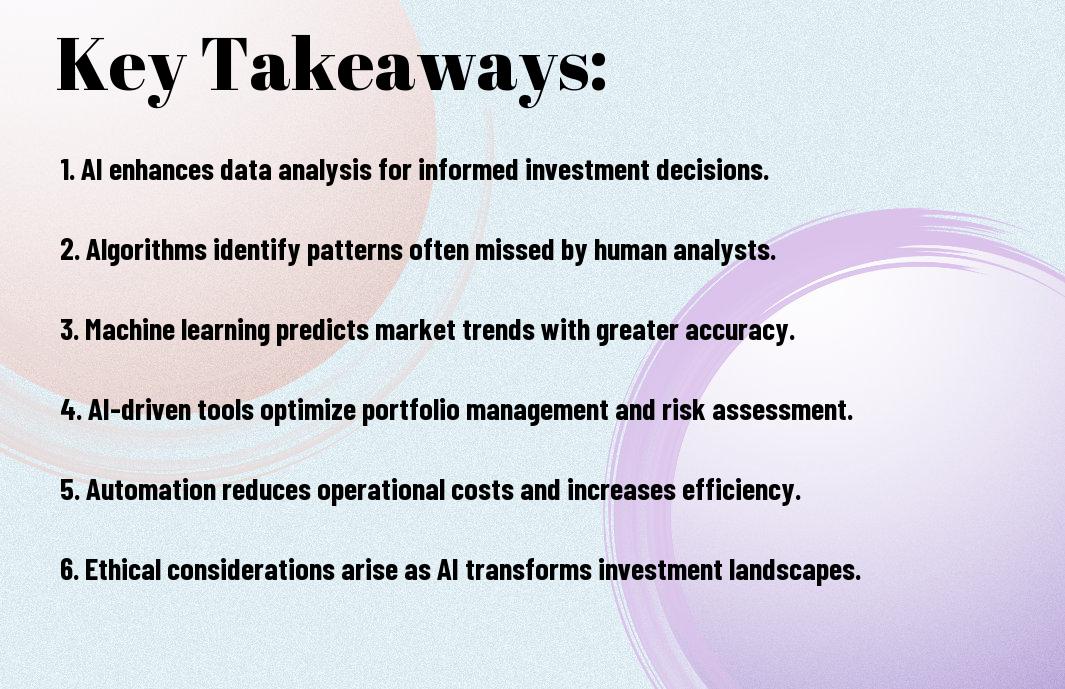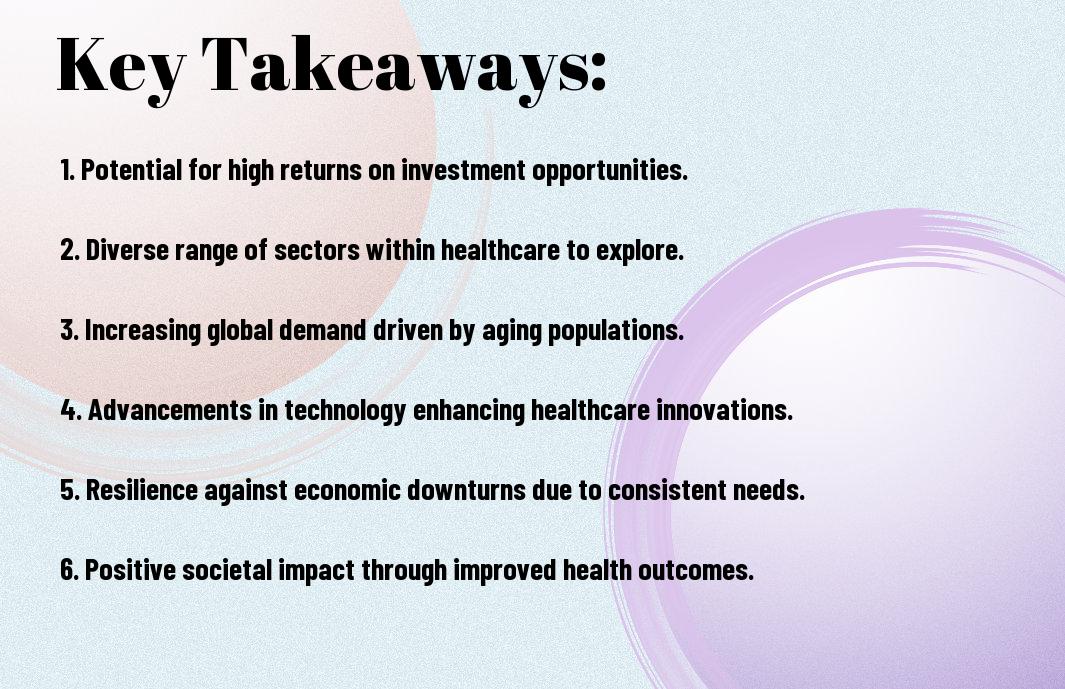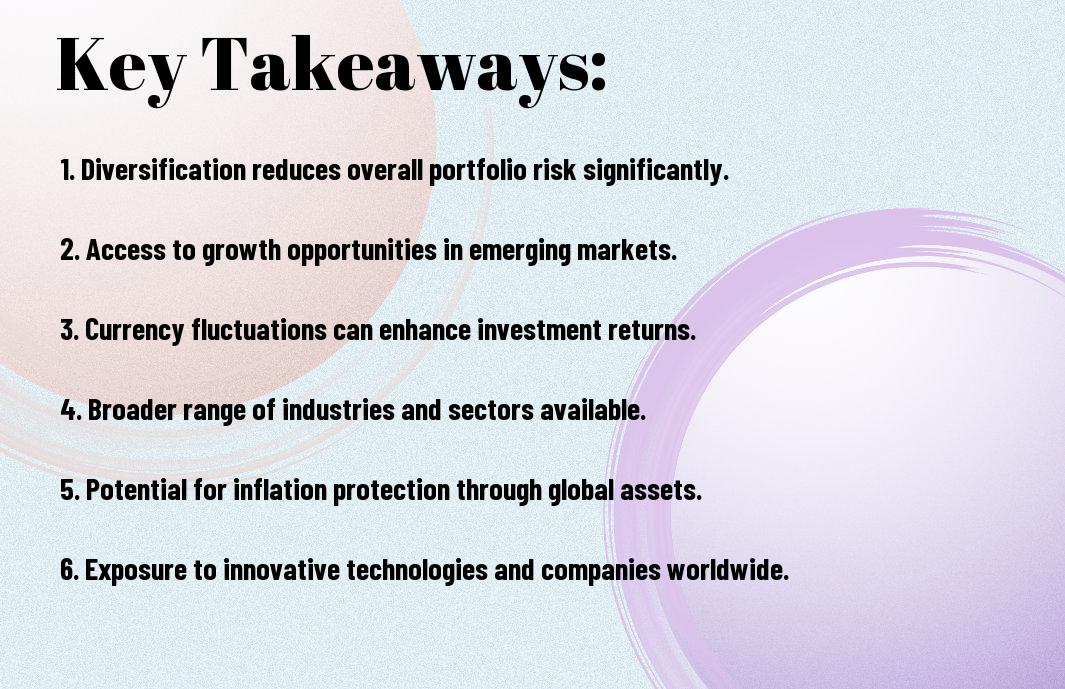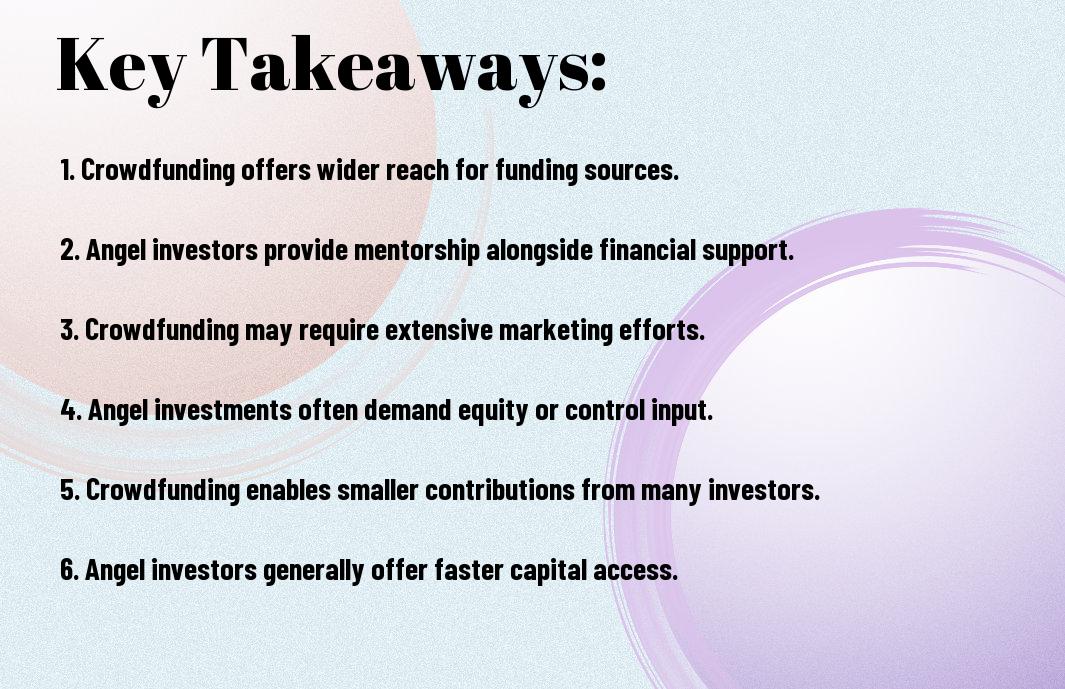Financial ratios are imperative tools that enable you to evaluate the performance and stability of your investments. By understanding these metrics, you can make informed decisions that align with your financial goals. From liquidity to profitability, each ratio provides valuable insight into a company’s operational health. To get started, explore 6 Basic Financial Ratios and What They Reveal to enhance your investment strategy and optimize your portfolio.
Key Takeaways:
- Assessment of Financial Health: Financial ratios provide investors with insights into a company’s operational efficiency, profitability, and overall financial stability.
- Comparison Tool: Ratios allow for effective comparisons between companies in the same industry, helping investors identify potential investment opportunities.
- Trend Analysis: Analyzing ratios over time can reveal patterns and trends, aiding investors in making informed decisions based on a company’s historical performance.
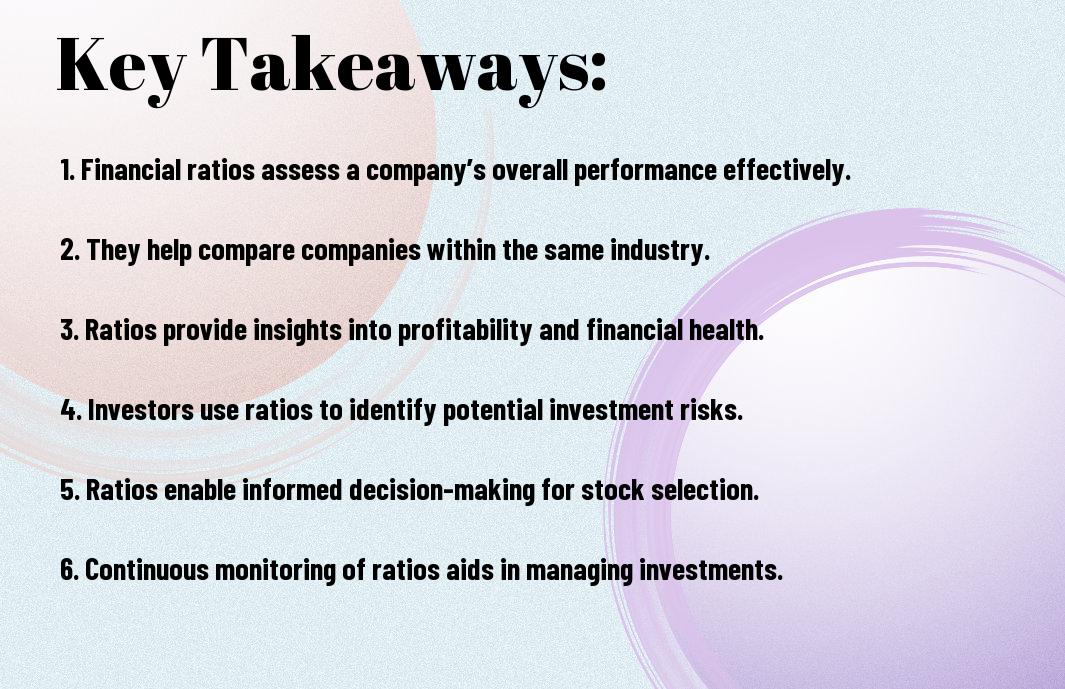
Understanding Financial Ratios
A financial ratio is a mathematical comparison between two financial metrics that helps you evaluate a company’s performance and financial health. These ratios provide insights into profitability, liquidity, and solvency, allowing you to make informed investment decisions. By analyzing financial ratios, you can identify trends over time and compare a company’s performance against industry benchmarks, making them important tools in your investing toolkit.
Definition and Purpose
Around the world of finance, financial ratios serve as vital indicators of a company’s operational efficiency and overall viability. They are used to assess profitability, liquidity, and leverage, guiding your investment choices by highlighting potential risks and rewards. Understanding these ratios enables you to make comparisons across companies and industries, ensuring that you are selecting the best options for your portfolio.
Common Financial Ratios
For investors, certain financial ratios are particularly important, including the Price-to-Earnings (P/E) ratio, Return on Equity (ROE), and Debt-to-Equity (D/E) ratio. Each of these ratios serves a specific purpose, with the P/E ratio indicating how much investors are willing to pay for a company’s earnings, the ROE measuring how efficiently a company generates profits from shareholder equity, and the D/E ratio assessing the company’s financial leverage through its debt levels compared to equity.
The significance of these common financial ratios cannot be understated, as they provide a snapshot of a company’s operational efficiency and risk profile. The P/E ratio helps you gauge whether a stock is overvalued or undervalued, while the ROE indicates how well your investment is likely to perform compared to others. The D/E ratio informs you about the company’s dependency on debt for financing, which is vital for assessing financial stability. By familiarizing yourself with these ratios, you can make astute investment decisions that align with your financial goals.
Analyzing Liquidity Ratios
If you want to gauge a company’s short-term financial health, analyzing liquidity ratios is necessary. These ratios help you understand how easily a firm can meet its short-term obligations, providing insight into its operational efficiency and financial stability. By measuring liquidity, you can identify investments that are less likely to face cash flow issues and are therefore likely to perform better in the long run.
Current Ratio
Behind the current ratio lies a simple formula: current assets divided by current liabilities. This ratio indicates whether a company can cover its short-term debts with its available assets. A current ratio above one signifies that the firm has more assets than liabilities, suggesting a stable short-term financial position. However, it’s important to compare this ratio against industry norms for a more accurate evaluation.
Quick Ratio
Quick ratios, sometimes referred to as the acid-test ratio, provide a more stringent measure of liquidity by excluding inventory from current assets. This ratio focuses on a company’s most liquid assets, giving you a clearer picture of its ability to pay off short-term liabilities without relying on inventory sales.
Ratio analysis will reveal how well a company can handle its financial obligations in the near term. A quick ratio of one or higher is typically seen as indicating a solid financial footing. By paying attention to this ratio, you can identify companies that can effectively manage their liabilities, helping you make informed investment choices.
Assessing Profitability Ratios
Unlike other financial metrics, profitability ratios provide you with important insights into a company’s ability to generate earnings relative to its revenue, assets, or equity. By evaluating these ratios, you can better understand how well a business is performing financially, and use this information to make informed investment decisions that align with your financial goals.
Gross Profit Margin
After calculating your gross profit margin, you’ll have a clearer view of how efficiently a company produces its goods. This ratio indicates the percentage of revenue that exceeds the cost of goods sold, allowing you to assess the profitability of the core business operations without accounting for operating expenses or other overhead costs.
Return on Equity (ROE)
With ROE, you gauge how effectively a company utilizes shareholders’ equity to generate profits. A higher ROE suggests that the company is efficiently converting the investment into earnings, which can significantly influence your investment choices and the overall perceived value of the stock.
Return on Equity (ROE) is calculated by dividing net income by shareholder’s equity. This ratio reveals the amount of profit a company generates with each dollar of equity, providing you an important measure of management’s efficiency. A consistently high ROE can indicate that the company is adept at reinvesting its earnings to grow and generate additional returns, making it an indicator of financial strength that you should closely monitor in your investment analysis.
Evaluating Solvency Ratios
Not all companies maintain a healthy balance between debt and equity, making solvency ratios imperative for your investment strategy. These ratios help assess a company’s ability to meet its long-term financial obligations, offering insight into its financial stability. By examining solvency ratios, you can determine whether a company is overly reliant on debt, which could signal potential risks in your investment decisions.
Debt to Equity Ratio
The debt to equity ratio compares a company’s total liabilities to its shareholder equity, revealing the extent to which a company is financed by debt. A high ratio indicates that a company is heavily reliant on debt, which may increase financial risk. In contrast, a lower ratio suggests a more conservative approach to financing, which can be more attractive to risk-averse investors like you.
Interest Coverage Ratio
Between operating income and interest expenses, the interest coverage ratio measures a company’s ability to pay interest on its outstanding debt. A higher ratio signifies greater ease in managing interest payments, which can be reassuring for you as an investor. It indicates financial health and reduces your concerns about the company’s capacity to handle its debt obligations.
For instance, a company with an interest coverage ratio of 5 means it generates five times the earnings needed to cover its interest payments, indicating strong financial health. Conversely, a ratio of less than 1 suggests that the company may struggle to meet its interest expenses, potentially leading to financial distress. Understanding this ratio allows you to make informed decisions about potential investments and their associated risks.

Using Financial Ratios for Investment Decisions
Keep in mind that financial ratios are imperative tools to guide your investment choices. They enable you to assess a company’s performance, operational efficiency, and overall financial health. By analyzing these ratios, you will be better equipped to make informed decisions and maximize your returns.
Identifying Investment Opportunities
About identifying investment opportunities, financial ratios can serve as key indicators of a company’s potential. Ratios such as the price-to-earnings (P/E) and the return on equity (ROE) help you compare companies within the same industry and discern which ones may offer greater value for your portfolio.
Risk Assessment
Between evaluating return potential and managing risk, understanding financial ratios helps you gauge the level of risk associated with an investment. Ratios like debt-to-equity and current ratio provide insights into a company’s leverage and liquidity, allowing you to identify potential red flags.
Another vital aspect of risk assessment is recognizing that high leverage can lead to financial instability, especially during economic downturns. By analyzing the debt-to-equity ratio, you can better evaluate whether a company is taking on excessive debt compared to its equity. Similarly, liquidity ratios can help you assess whether a company can meet its short-term obligations, giving you confidence in its operational sustainability. These insights empower you to make sound investment choices with a clear understanding of associated risks.
The Role of Financial Ratios in Portfolio Management
To effectively manage your investment portfolio, understanding financial ratios is crucial. These ratios provide valuable insights that help you assess the overall health of your investments, guiding you in making informed decisions. By analyzing financial ratios, you can identify trends, evaluate risk levels, and optimize your asset allocation to enhance performance and achieve your financial goals.
Diversification Strategies
Financial ratios play a key role in developing diversification strategies. By evaluating ratios from different industries and asset classes, you can identify opportunities for diversification that balance risk and return. Understanding how various sectors perform enables you to construct a portfolio that mitigates potential losses while maximizing growth potential.
Performance Evaluation
For successful portfolio management, performance evaluation is vital. You should regularly assess your investments using financial ratios, as they provide a clear picture of how well your portfolio is performing against benchmarks and market trends.
Considering the importance of performance evaluation, you can use ratios such as the Sharpe ratio and return on equity to gauge both risk-adjusted returns and the efficiency of your investments. By comparing these metrics to industry standards, you can make meaningful adjustments to your portfolio, ensuring it aligns with your investment goals. This ongoing assessment will empower you to make informed decisions, ultimately leading to better investment outcomes.
Summing up
The importance of financial ratios in investing cannot be overstated. These ratios provide you with imperative insights into a company’s performance and financial health, allowing you to make informed decisions about where to allocate your resources. By analyzing metrics such as liquidity, profitability, and leverage, you can better evaluate potential investments and manage your portfolio effectively. Utilizing financial ratios equips you with the knowledge needed to navigate the complexities of the market, ultimately helping you achieve your investment goals.
FAQ
Q: What are financial ratios and why are they important in investing?
A: Financial ratios are mathematical comparisons of various financial statement items. They help investors to evaluate a company’s financial health and performance. Ratios such as Price-to-Earnings (P/E), Debt-to-Equity, and Return on Equity (ROE) provide insights into profitability, capital structure, and efficiency. By analyzing these ratios, investors can make informed decisions about whether to buy, hold, or sell a stock.
Q: How can investors use financial ratios to assess a company’s performance?
A: Investors can use financial ratios to compare a company’s performance against industry benchmarks or its historical performance. For example, a consistently high Return on Equity (ROE) indicates effective management and strong profitability, while a low Price-to-Earnings (P/E) ratio relative to peers may indicate a stock is undervalued. These comparisons can reveal trends and help in identifying potential investment opportunities.
Q: Are there any limitations to relying on financial ratios in investment analysis?
A: While financial ratios are valuable tools, they do have limitations. They rely on historical data and may not consider future market conditions. Different industries may have distinct norms for what constitutes a good ratio, making cross-industry comparisons misleading. Additionally, ratios do not capture qualitative factors such as management effectiveness or market position, which are also important for comprehensive investment analysis.


